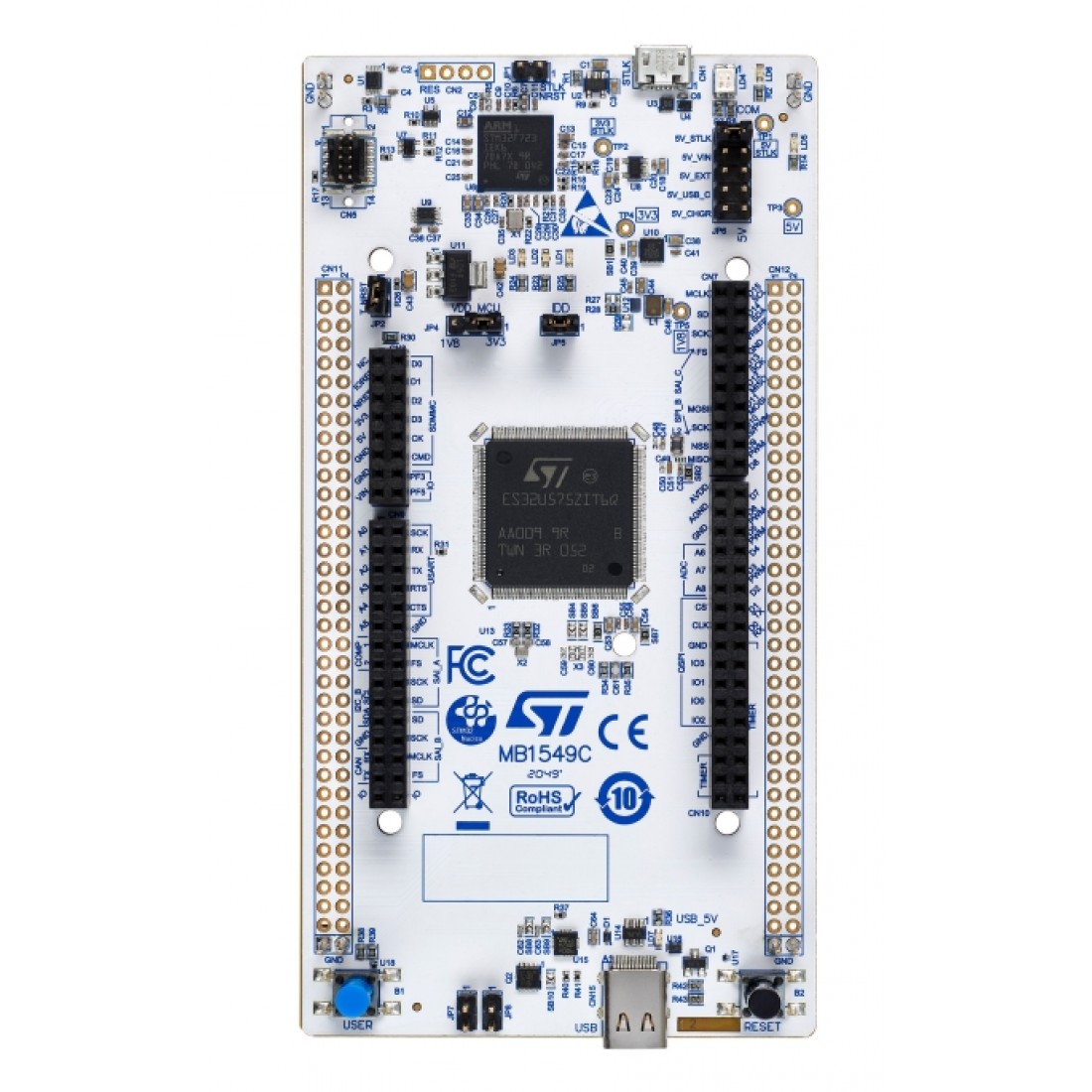
Up to 2MB of embedded Flash memory, with Read-While-Write capability on certain devices Supported by wide choice of Integrated Development Environments (IDEs) including IAR, Keil, GCC-based and ARM mbed.ĪXI and multi-AHB bus matrixes for interconnecting core, peripherals and memoriesĭouble-Precision Floating-Point maths unit on some variants
STM32 NUCLEO 144 SOFTWARE
The integrated ST-LINK/V2-1 debugger/programmer comes with the STM32 comprehensive software HAL library, software examples, as well as direct access to the ARM mbed on-line resources. The Zio connector, which is an extension of Arduino Uno, provides access to more peripherals and with the ST morpho headers expands the functionality with a choice of Shields. This STM32 Nucleo-144 development board provides a cost-effective and flexible way for users to build prototypes with the STM32F746ZGT6 microcontroller. NUCLEO-F746ZG Nucleo-144 Development Board Typical performance figures: 1082 CoreMark / 462 DMIPS at 216MHz clock frequency.
STM32 NUCLEO 144 CODE
The STM32F7 microcontrollers feature ST’s ART Accelerator™ as well as an L1 cache and deliver the maximum theoretical performance of the ARM Cortex-M7 core, regardless if code is executed from embedded Flash or external memory. Information relates only to products sold on or after the date of this certificate. RS Components has taken all reasonable steps to confirm this statement. The supplier of the item listed below has informed RS Components that the product is "RoHS Compliant".

The restricted substances and maximum allowed concentrations in the homogenous material are, by weight: Substance

I have come to the conclusion that it is most likely an issue originating from the Nucleo 144 board, but a little stuck as to what the actual issue is. The motors are also being supplied a high enough voltage (12V) but are not drawing it all in.
STM32 NUCLEO 144 DRIVER
I have tried multiple of the same driver from various manufacturers, and still I get the same result. I do not believe this to be a problem to do with the A4988 driver. I've verified, using a multimeter, that the voltage being provided to the board via an STLINK USB is 5V (which I believe is sufficient), and the driver is also receiving the correct voltage of 5V.

GPIOB->MODER |= (0b01 OTYPER &= ~(0b1 ODR &= ~(0b1 ODR ^= (0b1 << pin) // toggle between LOW and HIGH RCC->AHB1ENR |= RCC_AHB1ENR_GPIOGEN // enable GPIOG clock drivers/motor.c #include "./headers/stm32f767xx.h" Main.c #include "./headers/stm32f767xx.h" I also added some lines to toggle an LED (built onto the board) whenever the output to the A4988 driver is toggled between HIGH and LOW, which works fine. Having made some voltage readings using a multimeter, I have found that during and even while the program is paused, there is a steady voltage of around 1.2V being output by the pin. The A4988 driver expects a single rise in voltage to HIGH in order to step the motor. I am trying to control a stepper motor, using a A4988 driver along with a Nucleo 144 board with an STM32F767ZI on it.


 0 kommentar(er)
0 kommentar(er)
